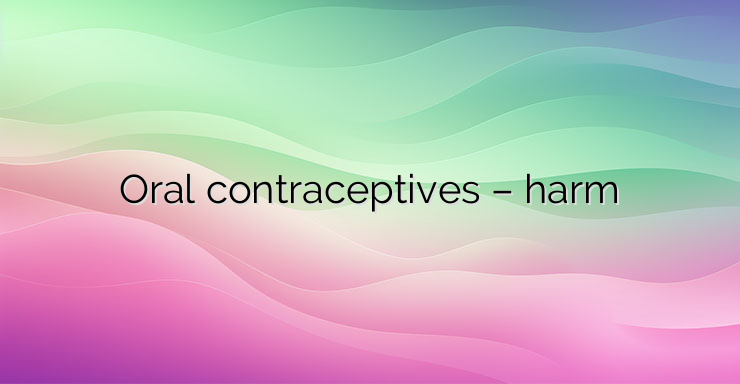The thematic cycle dedicated to oral contraceptives continues this week with the last article on this topic. In the first, I presented the types of contraceptives and their effect on the reproductive system. The second was intended to give more information about their use, their therapeutic and prophylactic benefits (for more information, see “Oral contraceptives – what are they?” and “Oral contraceptives – benefits”). This article will focus on the harms, unwanted side effects of contraceptives and their contraindications. The side effects of oral contraceptives are usually short-lived and do not cause long-term discomfort It is recommended to change the pill to another one with a lower estrogen content. The most common side effects of oral contraceptives are the estrogen component. is about 80%.The good news is that most of the estrogenic side effects are counteracted by the progestogen component. One of the side effects of estrogens is fluid retention due to their anabolic effect, which can be expressed by swelling of the ankles and weight gain of about 2-3 kg. Excess liquid is removed, however, during the pause between the first and second blisters. Irregular and scanty bleeding, called spotting, is also possible in the first month of taking contraceptives (especially with ultra-low doses of estrogen). It does not require treatment. Venous thromboembolism (occlusion of a blood vessel) as a serious side effect of oral contraceptives is a hot topic. The facts are as follows: when taking ethinyl estradiol at a dose of 35 mcg, the incidence of venous thromboembolism is 2.5 per 10,000 (or about 0.025%). Also, the risk is dose-dependent, which means that with ultra-low-dose preparations, it is even lower. However, in women with varicose changes on the lower extremities (varicose veins), obesity, smoking history, dyslipidemia, bed rest, a history of thromboembolic events and before and after surgical interventions, the correct approach is a preparation with a minimal estrogenic component or a change in the type of contraception. NEWS_MORE_BOX Breast cancer and the link to birth control is also an issue that needs to be addressed. Studies show that oral contraceptives increase the risk of breast cancer. However, this risk quickly decreases and even disappears after stopping the use of the preparations. In addition, contraceptives are taken in most cases by women of active reproductive age, and the incidence of breast cancer in this period is low and usually genetically determined. The last side effect I would like to point out,the absence of menstruation – amenorrhea – is possible after stopping oral contraceptives. This is explained by the insufficiently active neuro-endocrine axis responsible for the regulation of the menstrual cycle (see “Regulation of menstruation – how does it work?”). Amenorrhea is not an alarming symptom until 6 months after stopping the pills. Other side effects are: nausea, increased appetite, depression, chest tension, lower leg tension, constipation, mood swings, increased nervous excitability, chloasma with UV exposure, and others. From what has been presented, it is understood that the choice of the optimal oral contraceptive is a function of the estrogen and progestagen composition and its selection according to the physiological conditions of each individual woman; i.e. the essence in the appointment of contraceptives is the individualized approach.


Leave a Reply